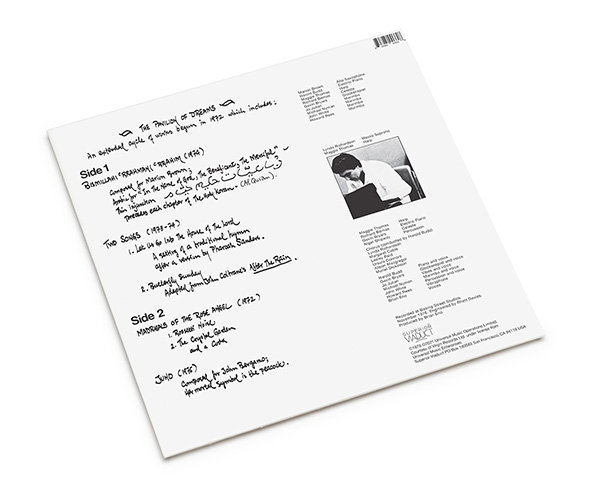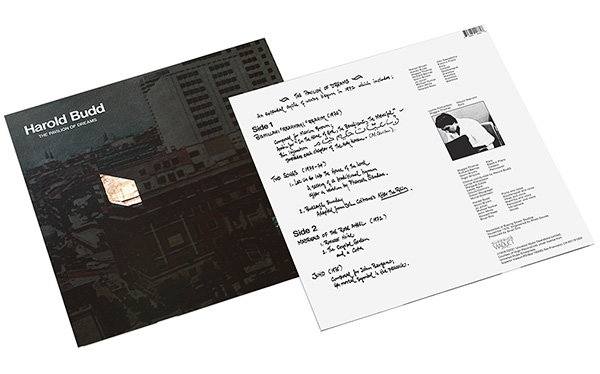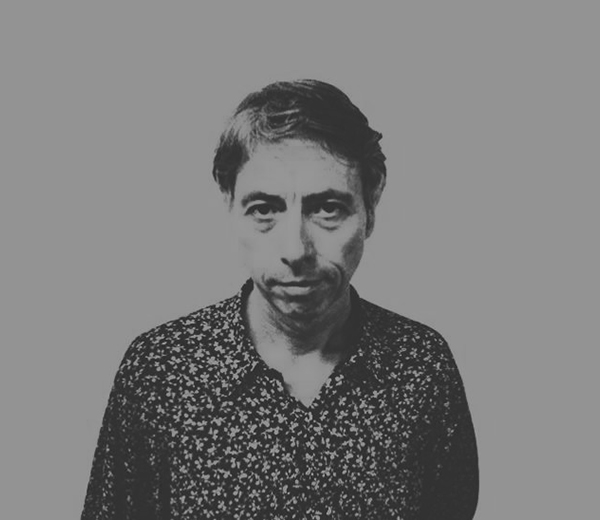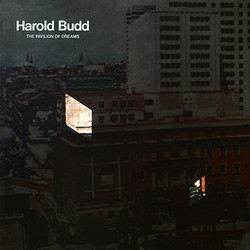Harold Budd - The Pavilion of Dreams


Over the last decade, Superior Viaduct has become synonymous with making the improbable and impossible real. One after another, spanning nearly all idioms of ambitious music, they’ve reissued some of the greatest holy grails in the history of sound. Their latest, the first vinyl pressing in 35 years of the legendary minimalist composer Harold Budd’s 1978 masterpiece, The Pavilion of Dreams, is yet another such case. One of great artefacts of Brian Eno’s Obscure series - a defining canon of music at the juncture of minimalism and ambient music - through its startling structures and relationships, it stands as a rare illumination of 1970s West coast experimentalism, as well as a crucial challenge to the historical dominance of figures like Steve Reich and Philip Glass. Issued in both vinyl and CD editions, it’s impossible to overstate how exciting this is.
Harold Budd, who was among the many heartbreaking losses of the global pandemic, was as West Coast as they come. Born in Los Angeles and raised on the edge of the Mojave Desert, he was steeped in an early love of jazz, before cutting his teeth playing drums with Albert Ayler, whom he met in the army, while both members of the same regimental band. By the early 1960s, Budd’s gaze had shifted toward experimentalism and the avant-garde, prompting him to study composition under Ingolf Dahl at the University of Southern California.
Budd’s earliest known compositions are protominimalist works that owe a debt to composers like John Cage and Morton Feldman, a relationship that had but disappeared by the time his first LP, 1970’s stunning The Oak of the Golden Dreams, had emerged. Recorded with an early model of the Buchla modular synthesizer at the California Institute for the Arts and a truly visionary work of minimal drone and eastern modalities, it would be nearly a decade before the world heard from him again. Soon after the album’s release, Budd gave up composition, reportedly disgusted by the "academic pyrotechnics" of the avant-garde community.
While The Pavilion of Dreams wouldn’t emerge until 1978, it seems that Budd’s disillusionment with the world of music was relatively short lived. Conceived as an extended cycle of works, the album’s four works - Bismillahi ´Rrahmani ´Rrahim, Two Songs, Madrigals of the Rose Angel, and Juno - were composed between 1972 to 1975. Somewhere along the way, Budd passed an early recording of Madrigals of the Rose Angel to his friend, Gavin Bryars, who in turn passed it on to Brian Eno. Graced with one of the most forward-thinking ears in industry, Eno immediately recognized Budd’s rightful place on his newly founded Obscure imprint, which had been conceived as a home for likeminded artist in the emerging field of ambient music.
Recorded in London in 1976 with an incredible cast of musicians - Budd, Eno, Bryars, Marion Brown, Michael Nyman, and numerous others - The Pavilion of Dreams was produced by Eno and carves out a fascinating territory at the juncture of jazz, ambient music, and minimalism, the likes of which had almost no equivalent in its moment, laying the groundwork for an entire generation of artists working in its wake.
Beginning with dreamy, meandering passages led by jazz giant Marion Brown’s stunning saxophone work, the album’s first piec, Bismillahi ´Rrahmani ´Rrahim slowly evolves into a rippling universe of tonality and rhythm, moving at glacial pace of immersive calm, before easing into the harp and vocal drenched chasmic spaces of Two Songs, partially adapted by Budd from a composition by John Coltrane, which rounds out the first side of the LP.


Displaying almost perfect continuum, the second side of The Pavilion of Dreams carries similar vocal treatments to a higher plane, blending them with the rich tonal and rhythmic densities that helped define Bismillahi ´Rrahmani ´Rrahim, slowly building across the composition's length with long tones played against shimmering ambiences and instrumentation, before culminating the cycle with Juno, an astounding gesture the encounters the composer hybridizing high minimalism and spiritual jazz into a truly unexpected force.
An album of visionary creativity from which so much sprang, few objects can claim the historical importance held by Harold Budd’s The Pavilion of Dreams. Out of print on vinyl for decades, it’s no surprise that original copies are so sought after, and command the staggering prices that they do. Marking the beginning of a fruitful and lasting collaborative relationship between Budd and Eno that would deliver seminal records like Ambient 2 (The Plateaux of Mirror) and The Pearl over the years to come, Superior Viaduct’s beautifully produced CD and vinyl reissues couldn’t come at a better time. These are some of most beautiful and striking musical moments we can call to mind.

